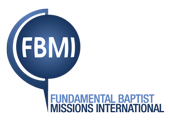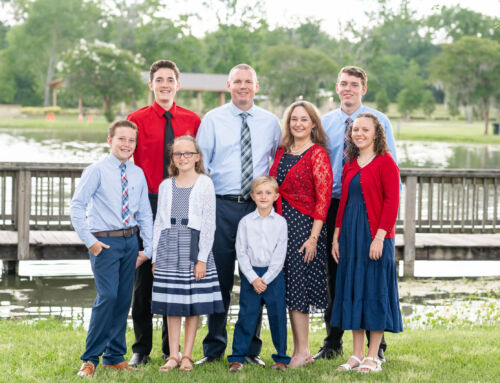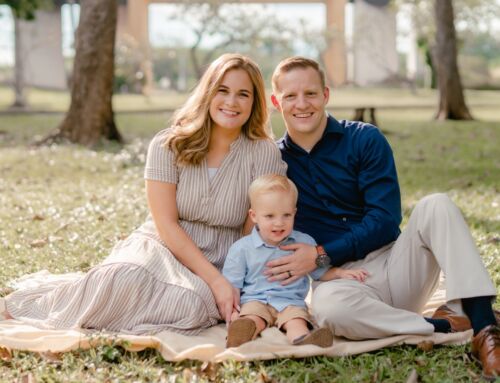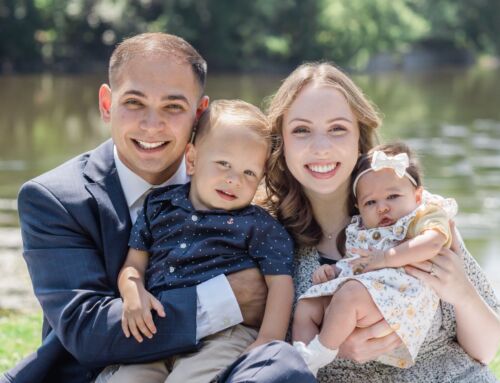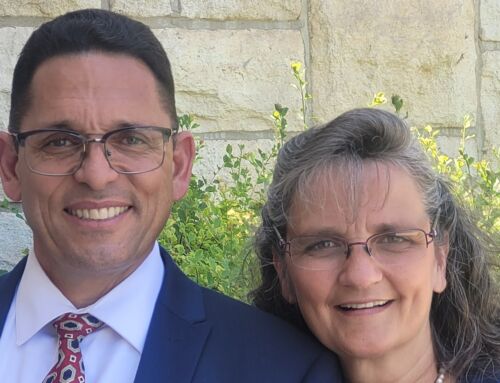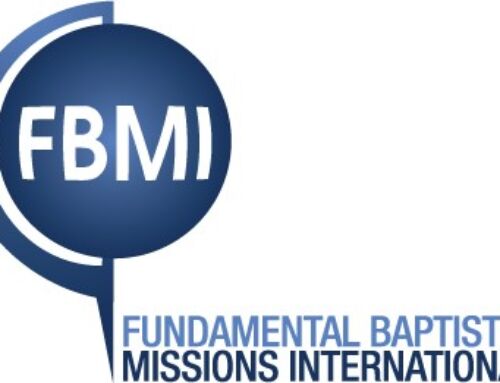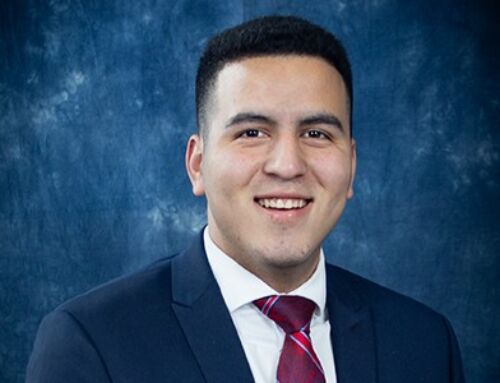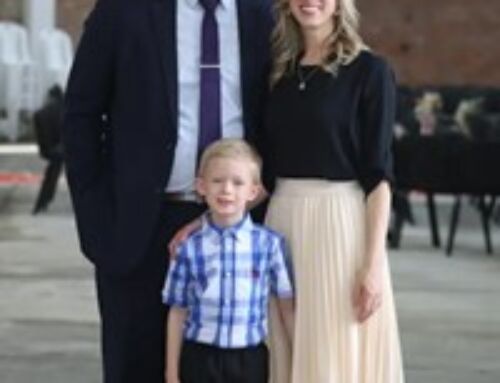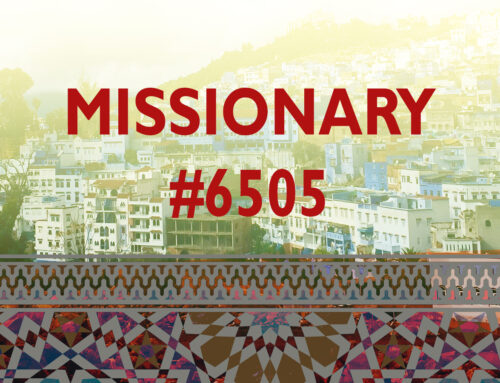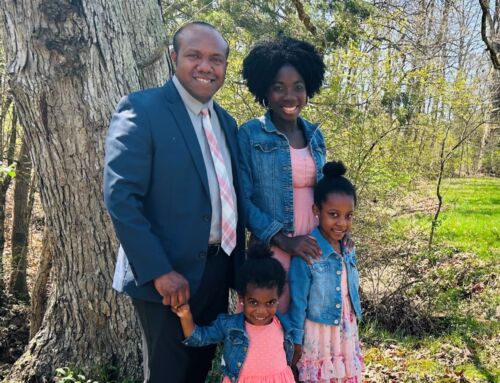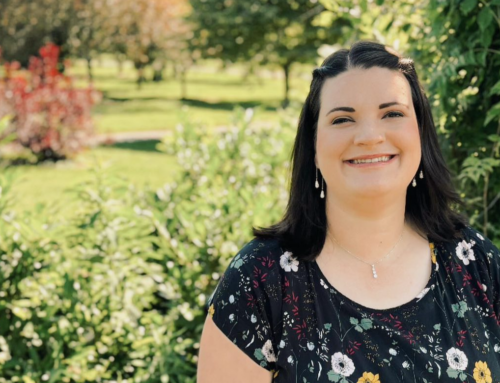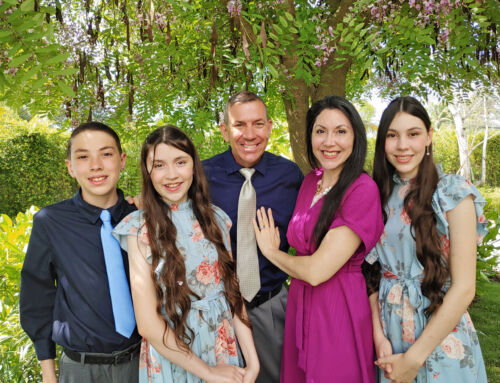* * *TENGA EN CUENTA: La carta en español sigue a su carta en inglés. Gracias. * * *
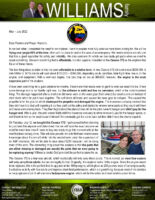 In our last letter, I presented the need for an airplane. I want to explain more fully what we have been looking for. We will be flying over jungle 95% of the time, often with no place to land in the case of an emergency. We need a reliable aircraft, one that has a good reputation for safety and reliability. We also want one for which we can easily get parts when we need to repair something. We want something that is affordable, but also capable. I decided on the Cessna 172 as the airplane that fits all of these needs.
In our last letter, I presented the need for an airplane. I want to explain more fully what we have been looking for. We will be flying over jungle 95% of the time, often with no place to land in the case of an emergency. We need a reliable aircraft, one that has a good reputation for safety and reliability. We also want one for which we can easily get parts when we need to repair something. We want something that is affordable, but also capable. I decided on the Cessna 172 as the airplane that fits all of these needs.
The bad thing about aviation is that the word affordable is a relative term. A new Cessna 172 will cost almost $500K. A mid-1960s to 1970s model will cost about $130,000 – $180,000, depending on its condition, total flight time, hours on the engine, and equipment. With a worn-out engine, that can drop as low as $60,000; however, the engine is the most expensive part of the airplane.
I have been searching for a good airplane for months. I found one that needs work to get it to what we need it to be. It has some damage and is not flyable right now, but the airframe is solid and has no corrosion, which is the most important thing. The damage happened after a mechanic did some work on the nose gear (front wheel) but used aluminum instead of steel rivets when he put it back together. The soft rivets all broke and caused the nose gear to collapse. This caused the propeller to hit the ground, which destroyed the propeller and damaged the engine. The insurance company decided that they didn’t want to deal with repairing it, so they paid out the policy and started to remove some parts so they could sell them and make some money back. They then forgot about the plane (it was still in the prior owner’s hangar) and didn’t pay for the hangar rent. After a year, the prior owner finally told the insurance company to either remove it, pay for the hangar space, or sell it back to him so he could repair it himself. He eventually got the plane back but then didn’t have the time to repair it.
On Tuesday, July 12, we bought this Cessna 172! I got counsel before deciding to purchase this airplane and determined that we will have the exact airplane we need for much less than if I were to buy one ready to go this moment with all the modifications already done. This will also provide me with firsthand maintenance knowledge about this aircraft while I do the needed work under the supervision of an A&P mechanic. We will be able to save about $20K because I will be doing most of the work. The interesting thing about this airplane is that the parts that are either missing or damaged are exactly the parts that we were going to be replacing anyway! Without a doubt, God provided the perfect airplane for us.
The Cessna 172 is a four-seat aircraft, which realistically will only carry three adults. This is normal, as most four-seaters will only carry three adults, but we can legally fix that. Originally, this airplane had a 145hp engine. Since the engine needs to be replaced, this is the perfect time to upgrade to the 180hp engine, which gives us 200 pounds more of carrying capacity. It will allow us to fly with four adults and improve short-field performance, which is a good thing, because most of the airstrips in the jungle are short. It will also be a factory-new engine, which will be the safest and most reliable option for us.
One of the things I will need to repair is the nose gear. I have already purchased parts to repair the nose-gear mounts and will be working on that soon. This will allow me to upgrade the nose-wheel parts to be able to put larger tires on the plane. This was one of the things I wanted to have for safety. The larger wheels will handle rough terrain better.
Another improvement we want is a STOL (Short Takeoff and Landing) kit. This is an approved modification that will allow the plane to fly slower, which helps it to land and take off in a shorter distance. With the bigger wheels, we also need new brakes, which happen to be one of the things that were removed. Adding better brakes will also increase our safety margins. The final modification desired is renovating the instrument panel. Most of the instruments have been in the plane since it was built. The newer or more valuable ones were removed by the insurance company. I would like to upgrade the panel to new equipment. We will get the ability to monitor every aspect of engine operation, as well as full terrain awareness and GPS navigation, including all of the jungle airstrips. It will log every bit of data during a flight, so I can review everything afterwards. I have found that to be very useful when analyzing trends for maintenance.
As of when this letter was written, we have raised about 50% of the total amount needed to get the airplane and get it flying. I have bought the airplane, put the deposit on the new engine, and purchased a few parts; but we do need to continue raising enough to finish it. The supply-chain issues that have affected so many things have also affected aviation parts. There is a waiting list for the engine from the factory. Right now, it appears that the projected date that our engine will be ready is in mid-January. We have until mid-January to raise the remaining funds for the engine, because it must be completely paid off before they will release it to us so that we can install it. At $68,000, the engine upgrade kit is the single largest cost for this project. This includes a new engine, propeller, engine mount, carburetor, starter, ignition units, baffles, and all hoses. The kit replaces almost everything in front of the firewall. We will also need additional funds to do the test flying, the engine break-in, the flight to Ecuador, and to get the airplane registered in Ecuador. These will be one-time costs associated with getting the plane ready to fly and getting it to the mission field. All normal operating costs will be covered by our regular support.
I have started a new YouTube channel for “Messengers for Christ,” which will contain videos about the progress on the airplane and the ministry. You will be able to keep up with what’s happening as we get this plane ready for service, fly it to Ecuador, and use it to spread the Gospel of Jesus Christ.
We want to give a huge “THANK YOU!” to those of you who have given specifically towards this need. We still have some work ahead of us in order to get it finished, but God has blessed us already. We have faith that He will provide the remaining funds. We are still traveling the U.S. to raise our support and spending time working on the plane to get it ready for the new engine in between our meetings. We plan on heading to Ecuador in September to get things ready on that end while we wait on the engine to be ready for pickup, and then will be returning when it is time to install the engine.
Thank you for your prayers and support during this time. It is amazing to see God work as we follow His leading!
God bless you!
Chris Williams
****************************************************************************
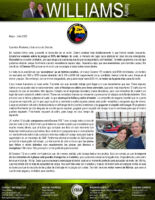 En nuestra última carta, presenté la necesidad de un avión. Quiero explicar más detalladamente lo que hemos estado buscando. Estaremos volando sobre la jungla el 95% del tiempo de vuelo, a menudo sin lugar para aterrizar en caso de una emergencia. Necesitamos un avión confiable, uno que tenga una buena reputación por su seguridad y confiabilidad. También queremos uno del que podamos obtener piezas fácilmente cuando necesitemos reparar algo. Queremos algo que sea económico, pero también capaz. Me decidí por el Cessna 172 porque es el avión que se adapta a todas estas necesidades.
En nuestra última carta, presenté la necesidad de un avión. Quiero explicar más detalladamente lo que hemos estado buscando. Estaremos volando sobre la jungla el 95% del tiempo de vuelo, a menudo sin lugar para aterrizar en caso de una emergencia. Necesitamos un avión confiable, uno que tenga una buena reputación por su seguridad y confiabilidad. También queremos uno del que podamos obtener piezas fácilmente cuando necesitemos reparar algo. Queremos algo que sea económico, pero también capaz. Me decidí por el Cessna 172 porque es el avión que se adapta a todas estas necesidades.
Lo malo de la aviación es que “económico” es un término relativo. Un nuevo Cessna 172 costaría casi $500 mil dólares. Un modelo de mediados de 1960 a 1970 costará alrededor de $ 130 a $180 mil, dependiendo de su condición, tiempo total de vuelo, horas en el motor y equipo. Sin embargo, con un motor desgastado, eso puede bajar hasta $ 60 mil, el motor es la parte más cara del avión.
Llevo meses buscando un buen avión. Encontré uno que necesita trabajo para llegar a lo que necesitamos que sea. Tiene algunos daños y no se puede volar en este momento, pero el fuselaje es sólido y no tiene corrosión, que es lo más importante. El daño ocurrió después de que un mecánico hizo algunos trabajos en el engranaje delantero (rueda delantera), pero usó remaches de aluminio en lugar de acero cuando lo volvió a armar. Todos los remaches blandos se rompieron y provocaron el colapso de la llanta delantera. Esto provocó que la hélice golpeara el suelo, lo que destruyó la hélice y dañó el motor. La compañía de seguros decidió que no quería ocuparse en repararlo, por lo que pagó la póliza y comenzó a quitar algunas piezas para poder venderlas y recuperar algo de dinero. Luego se olvidaron del avión (todavía estaba en el hangar de los dueños anteriores) y no pagaron el alquiler del hangar. El propietario anterior finalmente les dijo después de un año que lo sacaran, pagaran por el espacio del hangar o se lo vendieran para que él mismo pudiera repararlo. Finalmente recuperó el avión, pero luego no tuvo tiempo de repararlo.
¡El martes 12 de julio compramos este Cessna 172! Tome consejo antes de decidir comprar este avión y determiné que tendremos el avión exacto que necesitamos por mucho menos dinero, que si tuviera que comprar uno listo en este momento con todas las modificaciones ya hechas. Esto también me proporcionará el conocimiento de mantenimiento sobre esta aeronave mientras realizo el trabajo necesario bajo la supervisión de un mecánico de A&P. Podremos ahorrar alrededor de $20k porque yo haré la mayor parte del trabajo. ¡Lo interesante de este avión es que las piezas que faltan o están dañadas son exactamente las piezas que íbamos a reemplazar! Sin duda, Dios proveyó el avión perfecto para nosotros.
El Cessna 172 es un avión de 4 asientos que, de manera realista, solo transportará a tres adultos. Esto es normal, ya que la mayoría de los vehículos de 4 plazas solo pueden transportar a 3 adultos, pero podemos solucionarlo legalmente. Originalmente, este avión tenía un motor de 145 hp. Dado que es necesario reemplazar el motor, este es el momento perfecto para actualizar al motor de 180 hp, que nos brinda 200 lb más de capacidad de carga. Nos permitirá volar con 4 adultos y mejorar el rendimiento en campos cortos, lo cual es bueno porque la mayoría de las pistas de aterrizaje en la jungla son cortas. También será un motor nuevo de fábrica, que será la opción más segura y confiable para nosotros.
Una de las cosas que tendré que reparar es el tren delantero. Ya compré piezas para reparar los soportes del engranaje de la llanta y trabajaré en eso pronto. Esto me permitirá actualizar las piezas de la rueda para poder colocar neumáticos más grandes en el avión. Esta era una de las cosas que quería tener por seguridad. Las ruedas más grandes se manejarán mejor en terrenos no planos.
Otra mejora que queremos es un kit STOL (despegue y aterrizaje cortos). Esta es una modificación aprobada que permitirá que el avión vuele más lento, lo que ayuda a aterrizar y despegar en una distancia más corta. Con las ruedas más grandes, también necesitamos frenos nuevos, que resultan ser una de las cosas que se quitaron. Agregar mejores frenos también aumentará nuestros márgenes de seguridad. La última modificación deseada es la renovación de los instrumentos. La mayoría de los instrumentos han estado en el avión desde que se construyó. Los más nuevos o valiosos fueron retirados por la compañía de seguros. Me gustaría actualizar el panel con un nuevo equipo. Tendremos la capacidad de monitorear todos los aspectos del funcionamiento del motor, así como el conocimiento completo del terreno y la navegación GPS, incluidas todas las pistas de aterrizaje en la selva. Registrará cada detalle de datos durante un vuelo, para poder revisarlo todo después. Descubrí que es muy útil al analizar tendencias para cuando le dé mantenimiento.
Al momento de escribir esta carta, hemos recaudado alrededor del 50% de la cantidad total necesaria para poner en marcha el avión. Compré el avión, puse el depósito en el nuevo motor y compré algunas piezas, pero necesitamos seguir recaudando lo suficiente para terminarlo. Los problemas con la cadena de proveedores han afectado tantas cosas, también han afectado a las piezas de aviación. Hay una lista de espera para el motor de fábrica. En este momento, parece que la fecha proyectada en que nuestro motor estará listo es a mediados de enero. Tenemos hasta mediados de enero para recaudar los fondos restantes para el motor porque debe estar completamente pagado antes de que nos lo entreguen, para luego instalarlo. El costo mas grande para este proyecto es de $68,000 dólares, para el kit de actualización del motor. Esto incluye un nuevo motor, hélice, montaje del motor, carburador, motor de arranque, unidades de encendido, deflectores y todas las mangueras. El kit reemplaza casi todo lo que se encuentra frente al firewall. También necesitaremos fondos adicionales para hacer el vuelo de prueba, el rodaje del motor, el vuelo a Ecuador y registrar el avión en Ecuador. Estos serán costos únicos asociados con preparar el avión para volar y llevarlo al campo misionero. Todos los costos operativos normales serán cubiertos por nuestro soporte regular.
Comencé un nuevo canal de YouTube para “Mensajeros de Cristo” que contendrá videos sobre el progreso en el avión y el ministerio. Podrá mantenerse al tanto de lo que sucede a medida que preparamos este avión para el servicio, lo llevamos a Ecuador y lo usamos para difundir el Evangelio de Jesucristo.
¡¡¡Queremos dar un enorme GRACIAS!!! A aquellos de ustedes que han dado específicamente para esta necesidad. Todavía tenemos trabajo por delante para terminarlo, pero Dios ya nos ha bendecido. Tenemos fe en que Él proveerá los fondos restantes. Todavía estamos viajando por los EE. UU. y dedicando tiempo a trabajar en el avión para prepararlo para el nuevo motor entre nuestras reuniones. Planeamos viajar a Ecuador en septiembre para tener todo listo mientras esperamos que el motor esté listo para ser recogido y luego regresaremos cuando sea el momento de instalar el motor.
Gracias por sus oraciones y apoyo durante este tiempo. ¡Es increíble ver a Dios obrar mientras seguimos su dirección!
¡Dios te bendiga!
Chris Williams
- We now own this Cessna 172!
- Parts to replace the nose-gear mounts
- We purchased the Cessna 172 for our “Messengers for Christ ministry to Ecuador!
